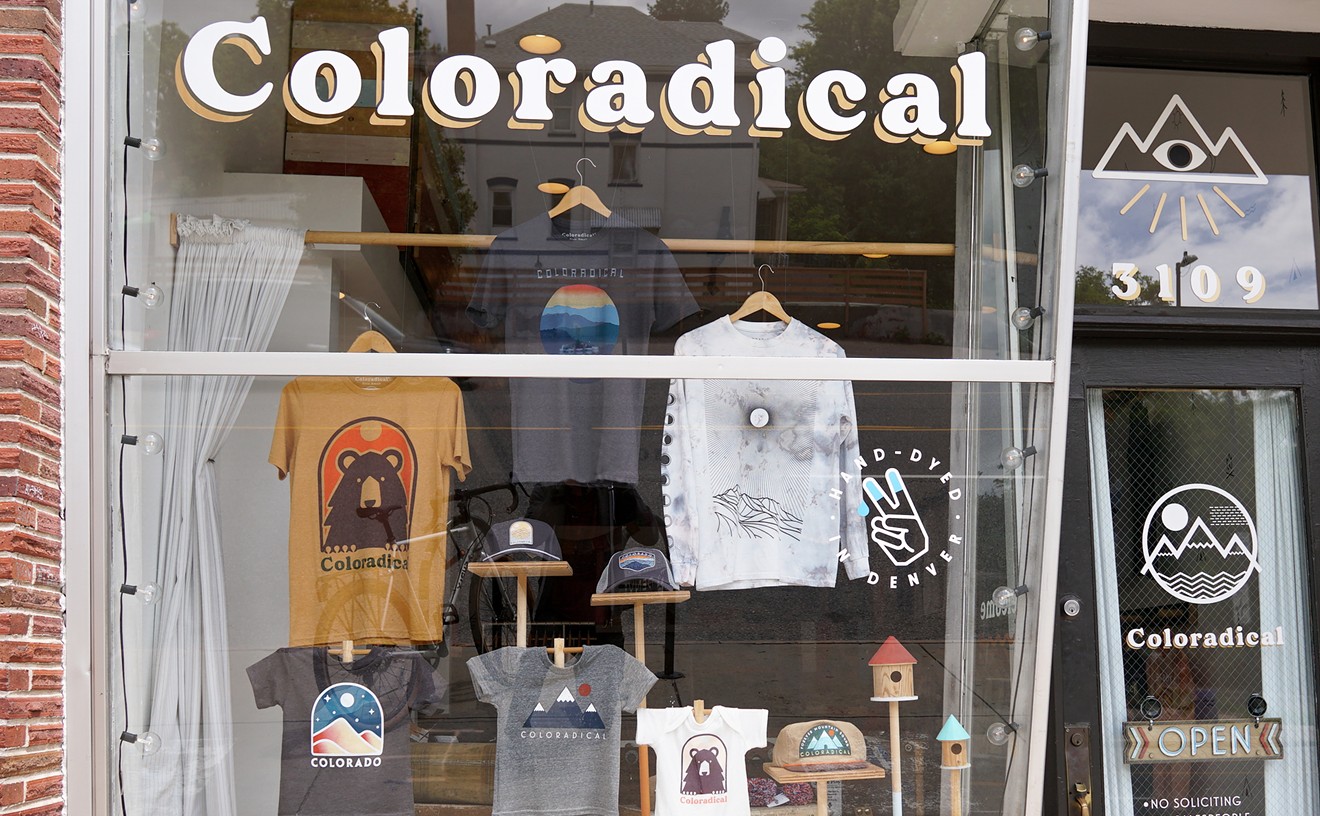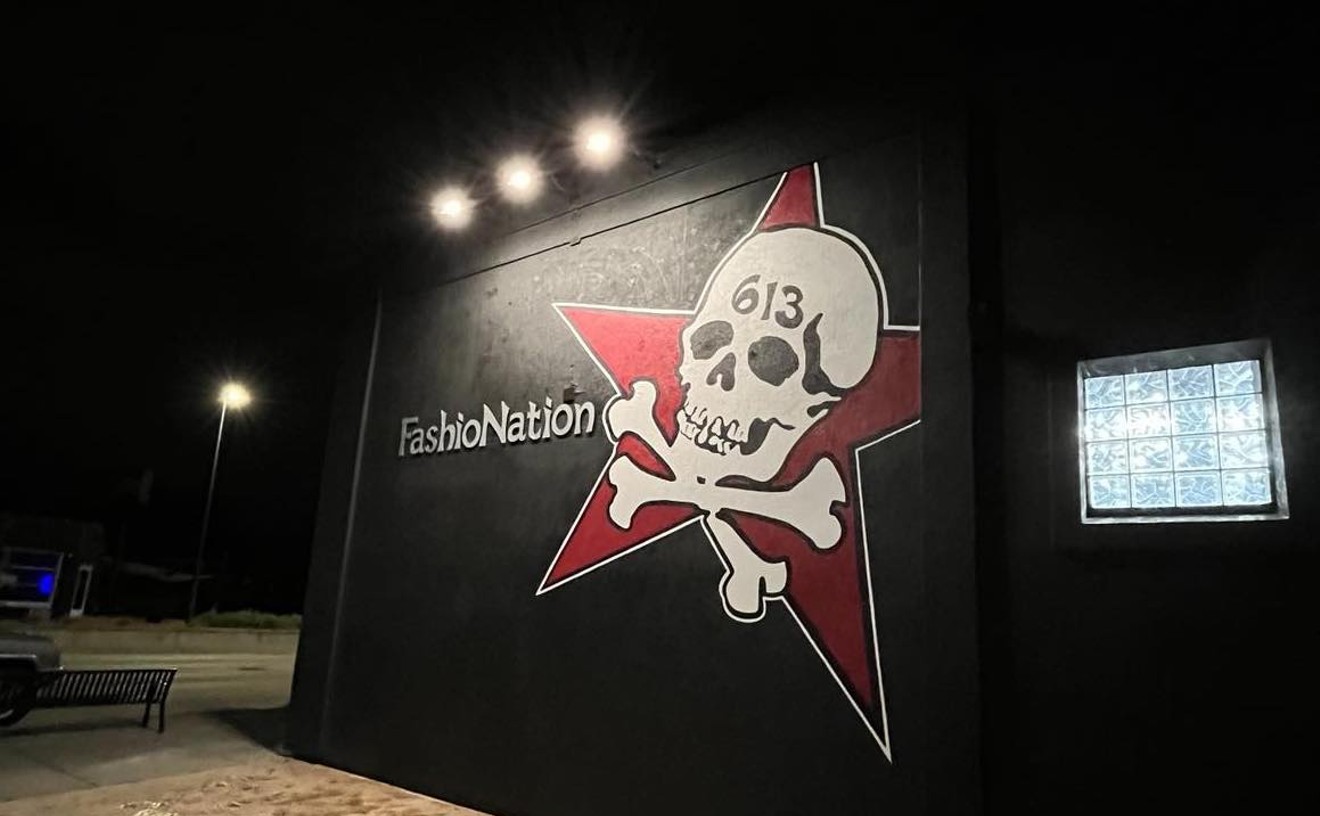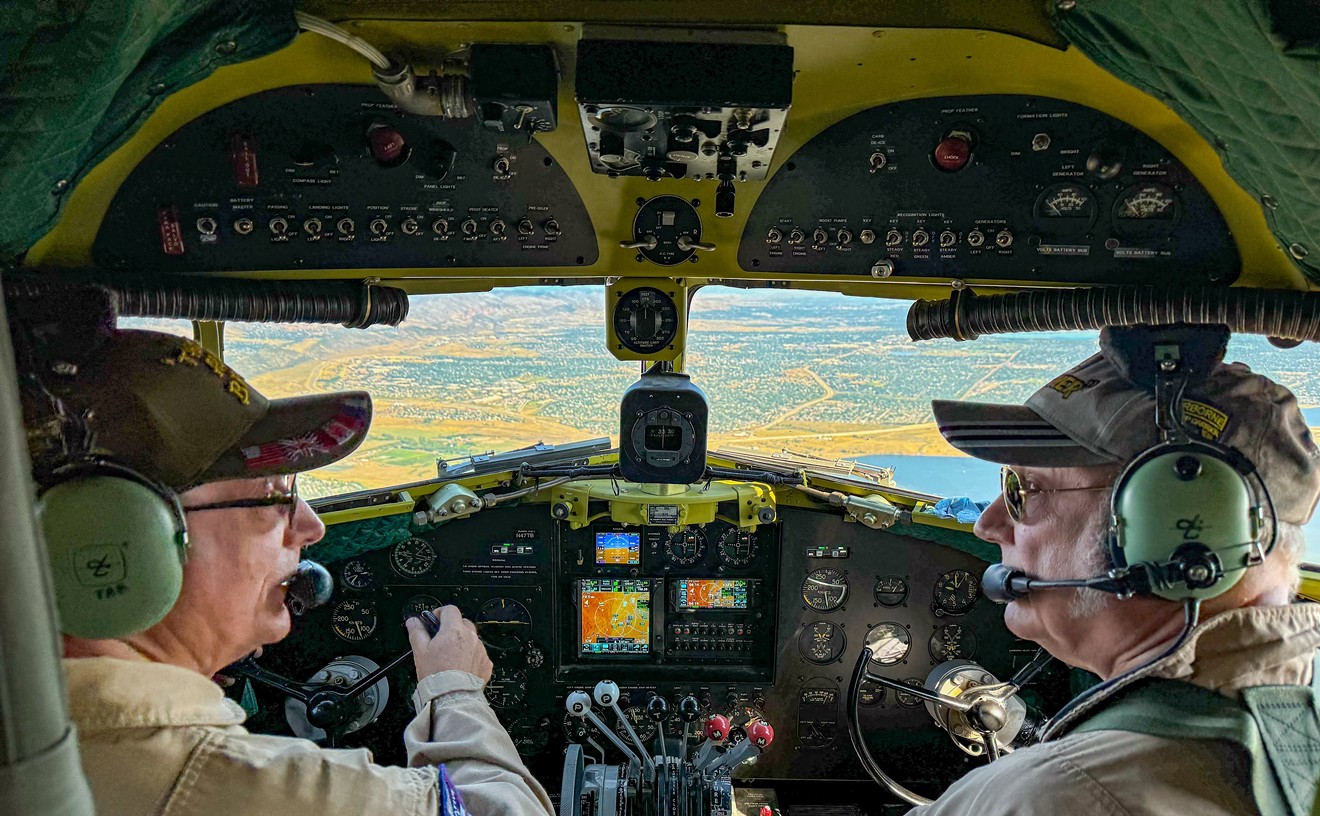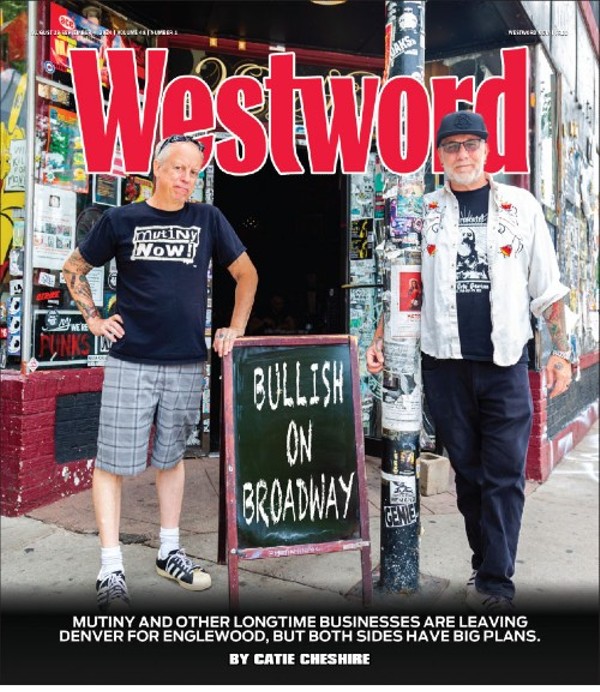#28: Daisy McConnell
Curator, administrator and artist Daisy McConnell helps to keep Colorado Springs up-to-date — and sometimes even ahead of the pack — on the arts front, as director of the University of Colorado at Colorado Springs Galleries of Contemporary Art, otherwise known as GOCA 1421, the campus gallery, and GOCA 121, a downtown satellite gallery. In her five years of heading GOCA, the dynamic McConnell has turned the galleries into a fun, lively and vital educational resource. Keep reading for her answers to the 100CC questionnaire.
Westword: If you could collaborate with anyone in history, who would it be, and why?
Daisy McConnell: Working with the Bauhaus collective in the context of the time it existed would be thrilling. Art museums and institutions seem to finally be catching up to the concept of eliminating boundaries between theater, dance, visual art, performance, craft, print, architecture and everyday life that they espoused before the start of WWII – a union of art and design. My father was a graphic illustrator, and I grew up loving great design as art and not recognizing boundaries that seem to exist between the two. The aesthetic they created was gorgeous and always takes my breath away.
If I could have two, I would also have loved to have been part of the Riot Grrrl movement in the early '90s – I just missed it growing up in the Pacific Northwest, as I was too young to really be a part of it. Pre-Internet punk feminist ideals through collectively making music, putting out zines and being REALLY LOUD about social and environmental injustice sounds incredibly appealing to me right now. They had a bigger impact on our current culture then I think they are given credit for, and I still want to be one.
Who in the world is interesting to you right now, and why?
I’ve been reading Amelia Jones’s writings – she’s an art historian and curator who brilliantly rattles cages that in my opinion need more rattling through a critical feminist lens. Her subject matter – feminist history, body art, performance, queer theory, sexuality in art, sexual politics – is juicy stuff in the world of art discourse. As a curator she puts forward artists who have been marginalized and has organized stunning and consciousness-raising exhibitions.
What's one art trend you want to see die this year?
I really find all art trends and trends in general fascinating because they tell us so much about ourselves. One behavior that I’d like to see challenged with artists and arts organizations is provincialism and thinking small. I think it’s important to respect the local, but it seems that a lot of artists and arts organizations get stuck competing with each other on a small scale when they could be banding together and thinking BIG by creating opportunities to amplify what is great about that local art scene. I’m a big fan of collaboration and expansive vision – I’d love to see more of this everywhere. Why not think as big as we possibly can?
What's your day job?
I work as director of the UCCS Galleries of Contemporary Art (GOCA) in Colorado Springs, where I curate and produce eight to ten exhibits each year in two gallery spaces as well as off-site venues, run seven recurring programs, oversee the UCCS campus art collection and manage a staff of two, an advisory board and a host of students and interns. I am an exhibiting, practicing artist and also teach Arts Administration classes at UCCS.
I incorporate the gallery as a teaching resource, and through inviting students in for diverse programs that connect with them and their interests. Our community audience has grown tremendously through high-profile and award-winning exhibitions, inventive programs, and an incredible amount of energy spent on authentically marketing and engaging with our supporters. Ultimately, we’ve been able to raise the funding needed to bring experimental, engaging, often collaborative contemporary art projects through making a significant cultural impact on this community.
GOCA’s programs are playful, serious and experimental all at once – noontime dance parties in the gallery, a seven-evening series of talks on the central topic of water, collaborative dance and concerts connecting to the visual art on display, visual training combined with wine tasting, and mash-up lecture series featuring DIY and contemporary culture topics to name some – and they build on the exhibits in ways that a traditional gallery lecture cannot.
A mystery patron offers you unlimited funds for life. What will you do with it?
I'd love to start a robust artist and innovator residency program that brought together all types of creative thinkers, scientists and artists to cross-pollinate ideas, techniques, research and big concepts in a state-of-the-art lab and workshop setting. It would be connected to the local community but also have a global reach. It would be wonderful to bring artists and scientists and other innovators together to tackle real-world issues — like clean drinking water and refugee housing — but also to dream up future visions for everything from housing to energy to aesthetics and beyond: sort of a Bauhaus school for our time, but extended even further in its reach and vision. Of course, I’d want to have a big studio space there as well with lots of natural light.
What's the one thing Denver (or Colorado) could do to help the arts?
For Colorado, I’d say put more funding into higher education and specifically, the arts in universities. At GOCA we fundraise for 100 percent of our programs – this is a necessity in a higher education system where the state is only funding the university at a level of 7 to 8 percent of overall budget. To compare, faculty in the California UC system took to the streets in protest over proposed cuts to 45 percent state funding, and in Wisconsin the faculty there protested proposed cuts to 27 percent state funding.
There is a lot of focus on K-12 funding and of course that’s important, but our universities are critical to our state’s creative capital. Art majors are critical thinkers, creative problem-solvers and innovators. We’ve had to be very entrepreneurial and gain community buy-in, which has been a good thing, but having worked in private colleges I know what a difference funding can make to arts programs like mine. We serve more than the students and faculty – universities are very important to the cities they exist in and should be invested in by the populace. And since I believe in the power of the arts to effect positive change in our communities and world, it would stand to reason that investing in the arts in higher education would yield great return on that investment.
Who is your favorite Colorado Creative?
There is so much creative goodness coming out of Colorado right now – it’s nearly impossible to pick one!
I am really excited by the Hyperlink Collective, a group of artists based out of Denver connecting with artists in other cities each year – this year it’s Chicago – through collaborations and exhibits. I see this artist-directed networking practice as breaking open the typical museum/gallery structure by placing curatorial control in the hands of artists. It builds off of the freedom of connection that the internet affords, then pushing further to forge artist-to-artist connections in different cities. Artists are the creators of the art world, but typically aren’t the most powerful players in it – initiatives like this decentralize control in really interesting ways. I’ve been so impressed by the way artists are organizing themselves in Denver in particular.
I am constantly inspired by other curators making big things happen in Colorado. Joy Armstrong, curator at the Colorado Springs Fine Arts Center, produces phenomenal contemporary art exhibitions at the FAC, and the region is lucky to have her here. She also serves as GOCA’s Advisory Board Chair and has dynamically helped us build community through art in that role.
Jessica Hunter-Larsen is the genius behind Colorado College’s IDEA Space, and with the help of Briget Heidmous consistently brings next-level artists, exhibits and programs to Colorado Springs. We started a biennial citywide arts collaboration together – there’s a highly collaborative and supportive arts community in Colorado Springs.
What's on your agenda in the coming year?
I’m working on a third biennial citywide arts collaboration with nine other arts organizations slated for spring 2016 around the central theme of ENERGY – it’s expanding to include Pueblo and possibly Denver as well. I’m curating eight exhibits for our two spaces and am excited to produce an exhibit and major publication with Senga Nengudi, who taught at UCCS for over a decade, curated by Nora Burnett Abrams of the MCA and Elissa Auther at Museum of Art and Design in NYC for this fall as part of UCCS’s fiftieth anniversary. I’m also very much looking forward to our summer show, Bright Young Things, which is a biennial survey I started of emerging Front Range artists featuring quite a few artists from Redline’s residency program and Tank Studios in Denver, opening July 10. Right now I’m feverishly working on my favorite event of the year — our one-night art party, Brilliant, happening June 13 at our downtown gallery.
I’m also continuing my own artistic practice and will have two small solo shows in the next year.
Who do you think will get noticed in the local arts community in 2015?
Authentic, intelligent, innovative and challenging art will always get noticed. Here’s to more great art in Colorado in the year ahead!
Learn more about Daisy McConnell online and visit the UCCS GOCA website and Facebook page for more information.

Audio By Carbonatix
[
{
"name": "Air - MediumRectangle - Inline Content - Mobile Display Size",
"component": "12017618",
"insertPoint": "2",
"requiredCountToDisplay": "2",
"watchElement": ".fdn-content-body",
"astAdList": [
{
"adType": "rectangle",
"displayTargets": "mobile"
}
]
},{
"name": "Editor Picks",
"component": "17242653",
"insertPoint": "4",
"requiredCountToDisplay": "1",
"watchElement": ".fdn-content-body",
"astAdList": [
{
"adType": "rectangle",
"displayTargets": "desktop|tablet"
},{
"adType": "rectangle",
"displayTargets": "desktop|tablet|mobile"
}
]
},{
"name": "Inline Links",
"component": "18838239",
"insertPoint": "8th",
"startingPoint": 8,
"requiredCountToDisplay": "7",
"maxInsertions": 25
},{
"name": "Air - MediumRectangle - Combo - Inline Content",
"component": "17261320",
"insertPoint": "8th",
"startingPoint": 8,
"requiredCountToDisplay": "7",
"maxInsertions": 25,
"watchElement": ".fdn-content-body",
"astAdList": [
{
"adType": "rectangle",
"displayTargets": "desktop|tablet"
},{
"adType": "rectangle",
"displayTargets": "desktop|tablet|mobile"
}
]
},{
"name": "Inline Links",
"component": "18838239",
"insertPoint": "8th",
"startingPoint": 12,
"requiredCountToDisplay": "11",
"maxInsertions": 25
},{
"name": "Air - Leaderboard Tower - Combo - Inline Content",
"component": "17261321",
"insertPoint": "8th",
"startingPoint": 12,
"requiredCountToDisplay": "11",
"maxInsertions": 25,
"watchElement": ".fdn-content-body",
"astAdList": [
{
"adType": "leaderboardInlineContent",
"displayTargets": "desktop|tablet"
},{
"adType": "tower",
"displayTargets": "mobile"
}
]
}
]











